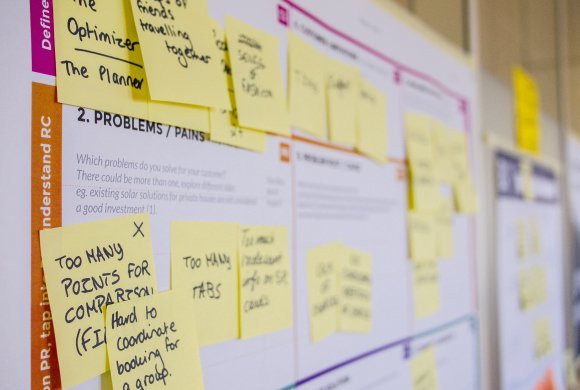Employee engagement continues to be a priority for employers. A 2015 Gallup survey found that only 30% of employees say they are engaged in their job. More than 50% say they are moderately engaged and 20% are actively disengaged. In years past, employee engagement was driven by compensation, benefits, and workplace perks, but those things don’t necessarily engage employees anymore. These days they pale in comparison to impactful work, opportunities to grow and learn, meaningful feedback, and connection to both the company’s purpose and the people they work with.
Employee engagement is the emotional commitment an employee has to the organization and its goals. Engaged employees aren’t there just for the paycheck, they want the company to succeed. Given that engagement has been empirically linked to stronger performance, productivity, profitability, reduced turnover and a stronger customer experience, it should be a priority for employers to increase engagement in their organizations.
The Technology Connection
Technology has long been significant in conducting business in today’s economy. Technology is also significant in the personal lives of individuals in the workforce. It stands to reason that it is also an important engagement factor. According to Mike Ettling, president of SAP SuccessFactors, one factor in employee disengagement is the fact that the technology people use in their personal lives is exponentially better (faster, more accurate, and a substantially better user experience) than the technology they interact with in the workplace. By providing employees with similar capabilities at work as they find in their personal lives, technology can enable new levels of engagement.
When people go from lightning speed, immediate information and social connectedness in their personal lives, to antiquated, slow, static, non-collaborative tools in the workplace, they experience frustration and a disconnect that leads to disengagement. To increase engagement, it is imperative that employers use technology at work in ways that interest, inspire and, motivate their employees.
Strategies for Technology-based Engagement
Some of the ideas that follow require an investment in online tools and software, but many of them can be implemented at a reasonable cost. Investing in engagement should be considered a cost with a high return on investment, and can be integrated into your business budget.
- Social engagement
Social media allows for instantaneous, constantly social engagement. When workers are siloed in offices or cubicles and only interact socially in the lunch room or at staff meetings, the need for social engagement is not being met within the workplace. Create opportunities for greater collaborative working, make room for social connections (pot luck lunches, pizza Fridays, go on wellness walks), if appropriate, consider rearranging workspaces to allow for more interaction.
- Recognition
An appreciated employee is an engaged employee. Contrary to traditional legacy recognition (the gold watch after 20 years), modern, recognition programs have a huge impact on performance and engagement. Specifically, companies that scored in the top 20% for building a recognition-rich culture experienced 31% lower voluntary turnover rates. Research conducted by Socialcast.com indicates that 69% of employees would work harder if they felt their efforts were better appreciated.
One-on-one real-time feedback and recognition is very important, especially for the younger workforce. There are a number of technology options that enhance recognition in the workplace and increase social connectedness. While recognition from management is a significant factor in employee retention, peer to peer recognition is growing as a dynamic process that contributes to employees feeling valued, not just by their company but by their coworkers. Many of these software tools are reasonably priced and can have a dramatic effect in building a recognition culture. Some tools to explore: workstars.com, higherground.com, giveawow.com, socialcast.com and kudosnow.com.
- Prioritizing Feedback
Employees want to be heard and valued for their ideas as much as their work. Often, companies make strategic HR plans and set goals according to what executives and leaders think employees want, but there can be a disconnect between what they assume and what is reality because they’ve never asked. This results in the implementation of programs and initiatives that fall flat because they were not important to the people they were meant to inspire.
Asking employees what they want and how they feel about things at work is one of the most important strategic initiatives a company can undertake. Using online surveys can be an inexpensive way of getting feedback that should inform business decisions. One client was spending huge amounts of money on expensive birthday cakes for each employee, gathering the team to sing Happy Birthday at the end of the day. In a satisfaction survey, they were shocked to find out that 80% of employees hated the birthday ritual. Many were no longer eating sugary sweets. Most didn’t like what they perceived as “forced attention” from their coworkers. Almost all said they would be happy if the birthday cake was abolished. Asking what was important to them led to making much-appreciated changes.
A cautionary note – if you ask, you’ll get honest feedback and you need to be prepared to take action. While you can’t implement every suggestion or give heed to every complaint, when good suggestions arise, or when complaints represent a good portion of the team, a response is imperative for the integrity of the feedback process. Communicating how you will address the issues that arise increase trust and loyalty.
- Collaborative communication and project management
Better, faster, more accurate, efficient, real-time collaboration with communication and task management is important to the younger workforce. This includes not only how teams communicate, but how they collaborate on projects and tasks. Communication and productivity tools like Slack, Asana, and Monday.com, to name just a few, allow for team members to connect with one another to share information, as well as to track progress on projects and increase efficiencies in managing tasks. Collaborative meeting tools like Go2Meeting, Zoom, Skype, and Google Hangouts give employees the opportunity to meet face to face, which is especially important for remote workers for staying connected. Find a tool that fits your needs and incorporate greater collaboration to see engagement, efficiency, and productivity grow.
- Learning and development
People are learning online in increasing numbers. Education user sites like Udemy have become wildly successful by providing affordable online courses on almost every subject imaginable. Courses can be taken at the student’s leisure, access is easy and courses are delivered through a variety of modalities. Masterclass.com is gaining popularity as professional authors, filmmakers, screenwriters, chefs, musicians etc. offer online master classes to the masses. Quick, accessible, affordable education that can be accessed on a variety of platforms (computer, tablet, smart phone) is the way of the future for learning and development.
If your learning and development opportunities are limited to one-day seminars or formal education, you are missing the boat. Less than 15% of employees take advantage of employer sponsored development opportunities. A reasonable assumption for this low uptake is that the traditional development offerings are too static, traditional or difficult to access because of fixed schedules. Don’t completely get rid of these options – they can be valuable – but sponsoring more non-traditional, online options may increase that uptake. Creating different learning opportunities for your employees may lead to them seeing development as an actual value as opposed to a perceived one.
- Gamification
Gamification is the process of taking something that already exists – a website, an enterprise application, an online community – and integrating game mechanics into it to motivate participation, engagement, and loyalty. When people hear gamification, they often envision games created for a business purpose. But gamification is not about creating something new, it’s about amplifying the effect of an existing, experience by applying the motivational techniques that make games so engaging.
Just as customers love games such as “enter to win” contests, employees enjoy healthy competition. A workplace wellness initiative called gettheworldmoving.com gamifies the action of increasing steps toward a healthier lifestyle by putting people on teams and having them compete for the most steps. Online learning programs that incorporate quizzes, timed competition, or earning badges or levels are more effective than those who have no such interactions. Opportunities to advance in levels at work in some sort of task or mission can be a strong motivator. An online, gamified onboarding process will get new team members super-charged when joining your organization. Engaging employees in opportunities to have fun while they work, in ways that inspire work, can create a high level of engagement.
Our relationship with technology is ever-evolving, and embracing it as part of workplace culture is necessary for modern business, However, there is a dark side. If not implemented properly, it can contribute to a significant waste of time: high learning curves for particularly difficult or complex software, using programs or tools that create rather than solve problems, increased stress that comes with technology that makes work more difficult or time-consuming. The solution is to cultivate the skills and techniques necessary to use technology effectively.
Implementing technology for the sake of technology will not necessarily increase engagement, but careful, well-planned, thoughtful ways that bring your team together and make their work lives easier and more interesting, will lead to the increased engagement that is the holy grail for most businesses.




